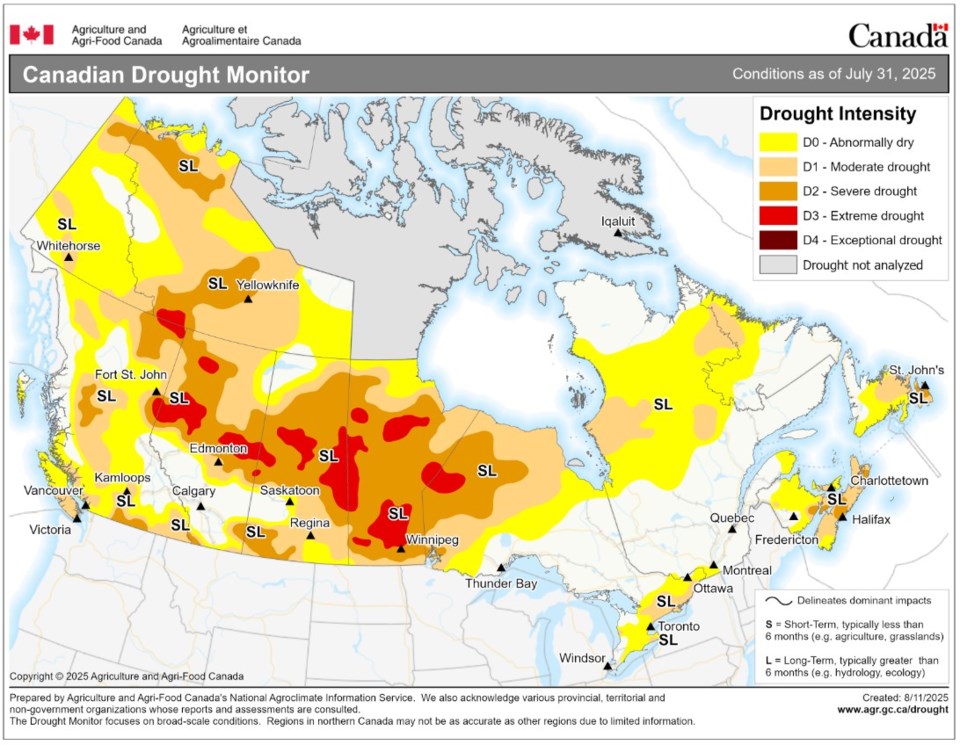Saskatchewan was dealing with very dry conditions even with the abundance of moisture in July, according to Agriculture and Agri-Food Canada's (AAFC) Drought Monitor for the month.
The Drought Monitor has a scale to measure dry conditions, from the low end called "abnormally dry" (D0) to "exceptional drought" (D4). For the Prairies, certain parts of the north show "extreme drought" (D3), while most are moderate (D1) to severe (D2) and some areas are abnormally dry. A stretch of area from the Peace River region of eastern B.C. through to west-central Saskatchewan is spared from any dry label.
A map of drought conditions for Saskatchewan show extreme conditions for parts of the north, moderate to severe in most areas except the west-central region, and parts of the south-central and southeast being abnormally dry. Last month also had cooler temperatures and variable precipitation.
AAFC says the central and northern areas of the province "remained very dry, with some regions receiving less than 40% of normal rainfall."
"Drought intensified across central and northern Saskatchewan, with several large Extreme Drought (D3) pockets emerging in the west and central regions and expanding along the border with Manitoba. As of the end of July, Severe Drought (D2) or Extreme Drought (D3) encompassed the majority of the northern half of the province." AAFC added.
These drought conditions resulted in "water levels dropping in lakes around Prince Albert, prompting warnings of potential water system shutdowns."
Meanwhile, the southwest - where it's been dry for multiple years - "saw over 150% of normal precipitation", improving conditions to the point of removing the Extreme Drought (D3) classification. But AAFC states moderate (D1) and severe (D2) conditions remain due to "early season high temperatures and long-term precipitation deficits", adding "it will take time and more favourable conditions for soil moisture, pastures, surface water supplies and ground water to recover."
Trevor Hadwen, an Agroclimate Specialist with AAFC, says the significant rainfall in the southwest was "mostly too late for any agricultural production; however, it will help in terms of renewing some of the pastures, improving the water supply of the region, and certainly improving soil moisture."
Several R.M.'s in the southwest declared a state of agricultural disaster due to drought conditions, including Fox Valley, Enterprise, Waverley, and Maple Creek.




